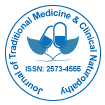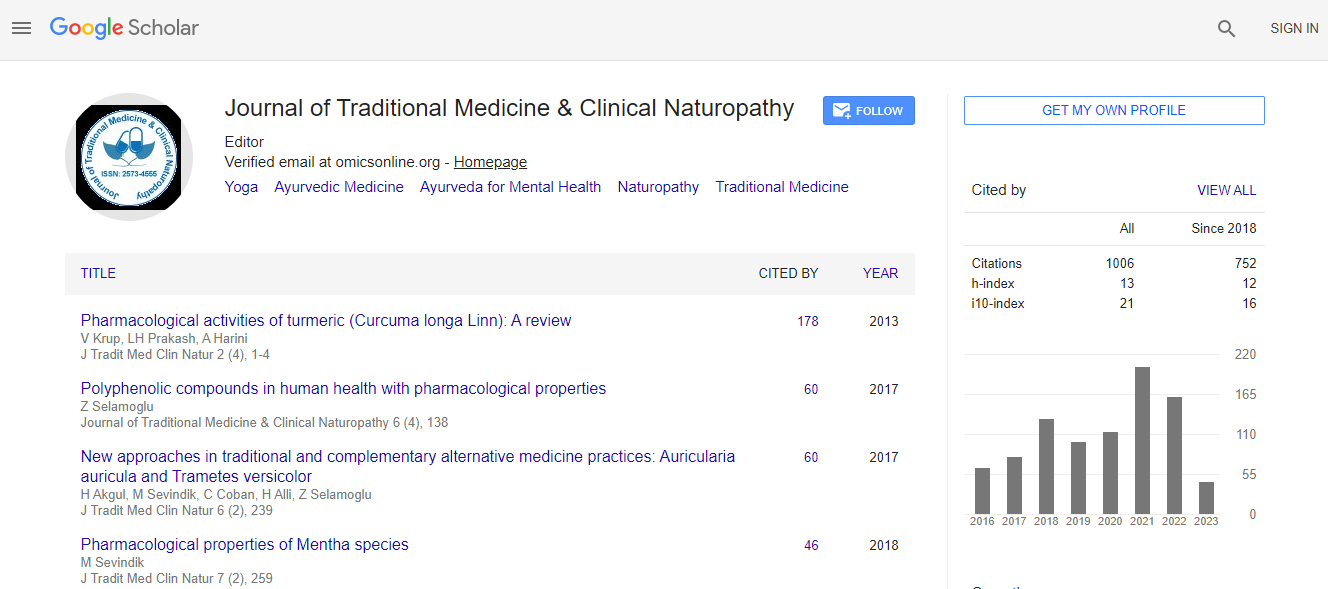Our Group organises 3000+ Global Conferenceseries Events every year across USA, Europe & Asia with support from 1000 more scientific Societies and Publishes 700+ Open Access Journals which contains over 50000 eminent personalities, reputed scientists as editorial board members.
Open Access Journals gaining more Readers and Citations
700 Journals and 15,000,000 Readers Each Journal is getting 25,000+ Readers
Google Scholar citation report
Citations : 1504
Journal of Traditional Medicine & Clinical Naturopathy peer review process verified at publons
Indexed In
- CAS Source Index (CASSI)
- Google Scholar
- Sherpa Romeo
- Open J Gate
- Genamics JournalSeek
- RefSeek
- Directory of Research Journal Indexing (DRJI)
- Hamdard University
- EBSCO A-Z
- Publons
- Geneva Foundation for Medical Education and Research
- Euro Pub
- ICMJE
Useful Links
Recommended Journals
Related Subjects
Share This Page
Eradication of Antibiotic – Resistant E. coli, S. aureus, K. pneumoniae, S. pneumoniae, A. baumannii, and P. aeruginosa with Chlorine Dioxide In Vitro
12th International Conference on Traditional & Alternative Medicine
Agnieszka Kotzé
Saudi Arabia
Posters & Accepted Abstracts: J Tradit Med Clin Natur
Abstract
Bacterial Antibiotic Resistance (AMR) is a prob-lem in all regions, with six pathogens accounting for 73.4% of deaths attributable to bacterial AMR, namely Escherichia coli (E. coli), Staphylococcus aureus (S. aureus), Klebsiella pneumoniae (K. pneumoniae), Streptococcus pneumoniae (S. pneumoniae), Acinetobacter baumannii (A. bau-mannii), and Psuedomonas aeruginosa (P. aeru-ginosa). The World Health Organization instigat-ed a Global Action Plan on AMR in 2021, which is still active - healthcare costs for AMR run into many billions of dollars worldwide. A Review on Antimicrobial Resistance commissioned by the British Government argued that AMR could kill 10 million people per year by 2050 and has emerged as one of the greatest public health threats of the 21st century. Just one AMR patho-gen, Methicillin-Resistant Staphylococcus aure-us (MRSA), caused more than 100,000 deaths worldwide, with the other four pathogens covered in this research causing as many deaths again. This research has focused on studying chlorine diox-ide's effectiveness in eradicating five different AMR bacteria in vitro as a novel and effective treatment. This study used different chlorine diox-ide concentrations with five antibiotic-resistant bacteria, ranging from 1 – 7 ppm concentrations. Disinfection studies were compared to controls, and the results demonstrated a greater than 95% disinfection with concentrations of 7 ppm. Chlo-rine dioxide is a size-selective antimicrobial agent that can kill micron-sized organisms rapidly but will not cause actual harm to much larger organ-isms like animals or humans as it cannot penetrate deeply into their living tissues. It is safe when used in low concentrations for short durations. Clinical trials must be undertaken to gain experience in the best dosages and protocols to eradicate antibiotic-resistant microorganisms from the body.Biography
Dr. Agnieszka (Aggie) Kotze is a Doctor of Naturopathy & Holistic Medicine and works as a consultant. Having experience in various fields and holding several degrees and certifications ranging from Biology, Business and Leadership, Health and Safety, Industrial Hygiene, and Naturopathy & Holistic Medicine. She has had the privilege to work with people from various cultures across the globe in various fields. Born in Poland and has lived in several countries including Poland, Austria, South Africa, the United Kingdom, and the Kingdom of Saudi Arabia which have enriched my life. Her journey started on a dif-ferent career path, which she also loved but had the opportunity to follow her passion. Therefore, decid-ed to study and practice Naturopathy and Holistic Medicine, which has been a blessing.

 Spanish
Spanish  Chinese
Chinese  Russian
Russian  German
German  French
French  Japanese
Japanese  Portuguese
Portuguese  Hindi
Hindi 
